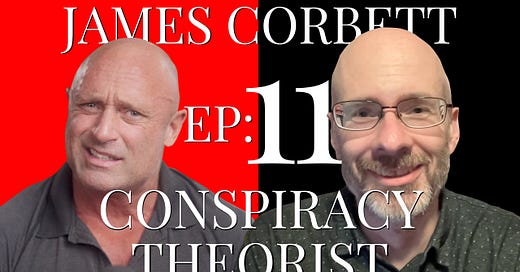
8 Segments of the Democratic Right
Here’s the quick political segmentation for you to ponder.
The Australian political landscape has two overarching groups: the Extremists and the Democrats.
We must actively counter the Extremists in the public square regardless of their form or stripe. No exceptions. No nuancing or qualifying. Their idealogies are all abhorrent. This includes five sub-groups: the Communists and Socialists, the Fascists and Ethno-Nationalists, and the Militant Jihadists as well.
We don’t weaken our democracy by banning them.
No! As Democrats, we must do the hard yards engaging and countering them.
We expose their dire histories, their graphic, heinous results, their intolerance, ulterior motives and their totalitarian DNA. We reveal and mock, we eviscerate and make them look odd and utterly untempting.
We built alliances among the Democrats in this regard, we unite with them against the Extremists and focus our message towards the disenfranchised, marginalised and dispossessed so they don’t drift to the Extremists.
As and once we win, we turn next to our fellow Democrats. With our democratic fellow-travellers, we reason and convert.
Now, inside the Democrats, there are two sub-groups both with long and proud traditions. They are the Democratic Left and the Democratic Right. As the names suggest, both are democratic but of different flavours. Both are ice cream, just one is strawberry and the other chocolate. Here the flavours are more government and more freedom.
We start with our great democratic opponent, the Democratic Left. This group comprises the Social Democrats with their penchant for the welfare state in the name of compassion. They are fairly united right now, sitting inside the Australian Labour Party, the Australian Greens and Animal Justice and representing a cohesive, fighting force. If we do not impune their motives but show them the results of their policies, we might have a chance. Far more effective is that we promote policies which contrast, wedge and split them. AUKUS is emerging as a wedge issue for the Democratic Left.
History suggests it will be hard to convince them. And if that be the case, so be it.
Next, we must strengthen the Democratic Right for future battles.
So what do we discover?
Well, the Democratic Right are highly fragmented at the moment. In fact, there are 8 segments, all fairly distinct sub-sub-groups if you look hard enough but with some smudging at the edges which reveals affliation across some of the grouping and that people migrate between them.
Here are the 8 segments:
The Moderates
We’re talking here about people who self-describe as small-l philosophical liberal or modern liberal. Moderates see themselves as fiscally responsible and socially liberal. Since 2007, if loyal party members, this segment hasn’t noticed they are frogs in the slow-boiling saucepan fiscally. If new to party politics, the ranks of the Moderates now include people who have a tendency to be big government spenders rather than economically lean, and that expenditure has often been on social projects they wouldn’t have chased in the Howard years. We are talking about Liberal Party members and Teals.The Libertarians
This group, most likely you as a reader of Liberty Itch, sometimes self-describe as classical liberal or liberal. Like the Moderates, they see themselves as fiscally responsible and socially liberal. Unlike the Moderates, the Libertarians are philosophically-driven and so their policy prescriptions are consistent and predictable. And they are very dry fiscally, to the point of reducing the size of government. This sometimes results in a doctrinaire approach and an obsession for philosophical purity tests. We are talking members of the Liberal Democrats.The Disaffected
These people are probably ex Liberal Party supporters, probably slow to leave, currently political refugees, probably moderate, probably white collar, and looking for a new party which expresses their values. They are confused and disoriented. They are upset. They feel the political rug has been pulled from under their feet.The Populists
Here, we’re talking probably about former Liberal Party members who self-describe as conservative but, on closer scrutiny, their views taken in total show a mixed or inconsistent framework. This inconsistency can sometimes cause them to err into dangerous territory and be drawn to a charismatic leader. They are mostly blue collar, and have already migrated to One Nation and the United Australia Party.The Conspiracy Theorists
This segment doesn’t know which political party they belong to, are skeptical of authority, and yearn to make sense of the world. They frequently latch onto theories about globalists and global bodies but, with emerging critical reasoning skills only and craving certainty in an uncertain world, cannot discern between fact and fiction. You can find these people in any of the parties but they are particularly concentrated in Australia One and the sovereign citizen movement.The Agrarians
This segment lives in rural areas or regional towns with a strong agricultural influence. They are conservative, but fiscally slip into protectionist economics and bigger spending rural services. They are in the National Party, Liberal Party and the Shooters Fishers and Farmers.The ConservativesAs I’ve documented, conservatives love to conserve whatever the status quo of the day. Since resistance to change is their modus operandi, the work tirelessly to halt or slow undesirable change. However, Conservatives rarely come up with new policy themselves and what they do come up with can be anti-freedom. Think bans, quick-to-judge court proceedings and higher taxes to fund conservative causes. This puts them on the back-foot constantly for lack of policy flair. You’ll find conservatives and self-described conservatives everywhere.
The Christian Right
This segment has no monopoly over right-wing Christians. The difference between the Christian Right and all other Democratic Right segments is that it is exclusively Christian and it seeks to assert Biblical authority into the state as a kind of theocracy of one potency or another. The other segments mentioned will assume a plural, secular, liberal democracy. The Christian Right is usually evangelical or orthodox, usually Pentecostal, always family-oriented. You will find members in Family First and the Australian Family Party.
The challenge for the Democratic Right is to bind these 8 segments to form a Centre-Right Coalition, win against the Democractic Left and put the Extremists out of business.
The post 8 Segments of the Democratic Right appeared first on Liberty Itch.












